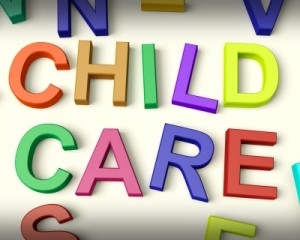 It is election time again and everybody has their hand out. They want your money. They want your contribution. That is natural.
..
We just had our primary elections to determine who will be on the ballot in November. Candidates often spend a TON of money and there is not even a guarantee of winning. (Or there shouldn’t be.) Everyone is asking for money, but you need to know this: contributions to political candidates and political campaigns are NOT deductible. Those $1000 a plate dinners are NOT deductible.
..
Just what is a contribution? It is a donation or a gift made voluntarily with no expectation of receiving anything in return. It is a donation or gift to a qualifying organization or to be used by a qualifying organization. You must itemize your deductions on Schedule A of the Form 1040 Individual Income Tax Return in order to claim these deductions, but don’t let the requirement to itemize keep you from giving where you feel moved to give.
..
We are a nation of givers…some are more generous than others. The INTERNAL REVENUE SERVICE knows that some of you also tell tall tales when it comes to your deductions for charitable contributions. A few bad apples have spoiled it for everyone; in other words, you need to be sure to document your deductions. Safeguard yourself with good record keeping. That might sound boring now, but how glad will you be when your return is audited and you have EVERYTHING you need to keep you from owing more tax.
..
Not every contribution is deductible. But don’t let that stop you from giving to someone in need. If you want to keep it just between you and God, and don’t have the receipts to support your deduction, then keep this donation from the Internal Revenue Service, too, and leave it off your return.
..
How do you know if yours is a qualifying organization? The IRS has a list of most of them in their Publication 78 found at www.irs.gov. You can search by the organization name, city and state. It is easiest to search if you know the EIN or Entity Identification Number of the organization. If they have a number, they were qualified once. If they are still on the IRS list, and you have your proof of giving, then you can safely claim that deduction.
..
Don’t let the tax laws rule your life. Just let the tax laws rule your tax return. Don’t let the tax laws keep you from giving where you want to give. Just know when it can go on your income tax return and when it cannot.
It is election time again and everybody has their hand out. They want your money. They want your contribution. That is natural.
..
We just had our primary elections to determine who will be on the ballot in November. Candidates often spend a TON of money and there is not even a guarantee of winning. (Or there shouldn’t be.) Everyone is asking for money, but you need to know this: contributions to political candidates and political campaigns are NOT deductible. Those $1000 a plate dinners are NOT deductible.
..
Just what is a contribution? It is a donation or a gift made voluntarily with no expectation of receiving anything in return. It is a donation or gift to a qualifying organization or to be used by a qualifying organization. You must itemize your deductions on Schedule A of the Form 1040 Individual Income Tax Return in order to claim these deductions, but don’t let the requirement to itemize keep you from giving where you feel moved to give.
..
We are a nation of givers…some are more generous than others. The INTERNAL REVENUE SERVICE knows that some of you also tell tall tales when it comes to your deductions for charitable contributions. A few bad apples have spoiled it for everyone; in other words, you need to be sure to document your deductions. Safeguard yourself with good record keeping. That might sound boring now, but how glad will you be when your return is audited and you have EVERYTHING you need to keep you from owing more tax.
..
Not every contribution is deductible. But don’t let that stop you from giving to someone in need. If you want to keep it just between you and God, and don’t have the receipts to support your deduction, then keep this donation from the Internal Revenue Service, too, and leave it off your return.
..
How do you know if yours is a qualifying organization? The IRS has a list of most of them in their Publication 78 found at www.irs.gov. You can search by the organization name, city and state. It is easiest to search if you know the EIN or Entity Identification Number of the organization. If they have a number, they were qualified once. If they are still on the IRS list, and you have your proof of giving, then you can safely claim that deduction.
..
Don’t let the tax laws rule your life. Just let the tax laws rule your tax return. Don’t let the tax laws keep you from giving where you want to give. Just know when it can go on your income tax return and when it cannot.
0



